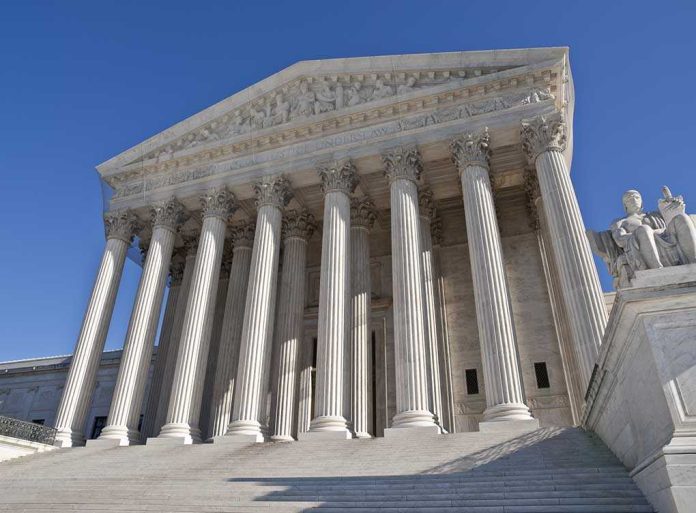
The shocking plot to assassinate three Supreme Court justices highlights the dangerous intersection of political activism and judicial decisions.
Story Overview
- Nicholas John Roske, now Sophie Roske, pleaded guilty to attempted murder of Justice Brett Kavanaugh.
- Roske’s plan was motivated by the leaked Supreme Court draft to overturn Roe v. Wade.
- The plot aimed to assassinate three conservative justices to shift the Court’s ideological balance.
- Roske’s gender transition adds complexity to the public narrative.
Assassination Plot Unveiled
On June 8, 2022, Nicholas John Roske traveled from California to Maryland with the intent to assassinate Supreme Court Justice Brett Kavanaugh. Armed with a gun and other weapons, Roske planned to kill Kavanaugh and then herself. Her motivation stemmed from anger over the leaked draft decision to overturn Roe v. Wade and concerns about gun rights. However, upon seeing U.S. Marshals outside Kavanaugh’s home, Roske reconsidered and called 911, confessing her intentions, leading to her arrest.
Prosecutors later revealed that Roske’s plan included targeting two additional conservative justices to alter the Court’s ideological balance. Such a plot underscores the severe risks faced by high-profile judicial figures, especially in an era where political decisions deeply polarize American society. Despite the violent intent, the incident concluded without bloodshed, as Roske self-reported and was taken into custody without incident.
Political Climate and Motivations
The plot against Justice Kavanaugh was directly triggered by the leaked *Dobbs* decision, which signaled the overturning of Roe v. Wade. This decision intensified national debates over abortion rights and heightened security concerns for Supreme Court justices. Additionally, recent mass shootings like the one in Uvalde, Texas, influenced Roske’s concerns about gun rights, further fueling her drastic actions.
Roske’s plan to assassinate three conservative justices aimed to shift the Supreme Court’s ideological balance. This reflects the volatile intersection of judicial decisions and political activism, where individuals feel compelled to take extreme measures to influence the nation’s future. The case emphasizes the increasing dangers judicial figures face and the necessity for enhanced security and legal protections.
Legal Proceedings and Public Narrative
On April 8, 2025, Roske pleaded guilty to attempted murder, with sentencing scheduled for October 3, 2025. The guidelines suggest a sentence of 30 years to life imprisonment. Adding complexity to the case, Roske publicly transitioned to female in September 2025 and is now referred to as Sophie Roske in court. This development has further complicated the public narrative surrounding the case, illustrating the multifaceted nature of modern judicial security threats.
Man who tried to assassinate Kavanaugh wanted to kill 3 justices, feds say https://t.co/xO88BpDs2W via @@YahooNews
— K Shiner (@katscheiner) September 20, 2025
As the case proceeds, it remains a stark reminder of the dangers faced by judicial figures in a politically charged environment. It also highlights the urgent need for legislative changes to protect judges, alongside ongoing debates about the impact of leaked decisions and political violence on the rule of law.
Sources:
Brett Kavanaugh assassination plot













